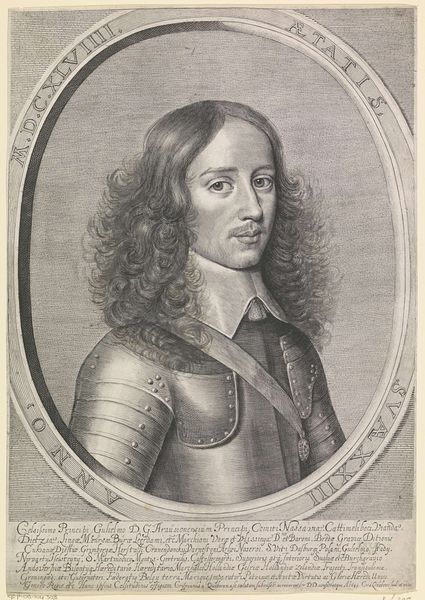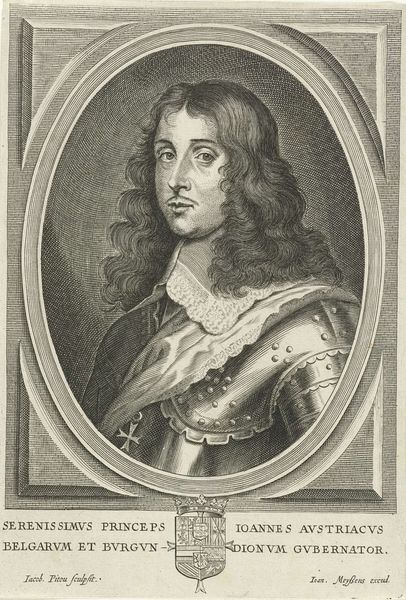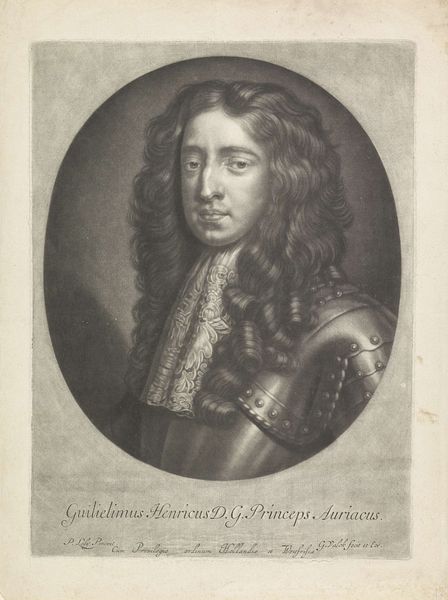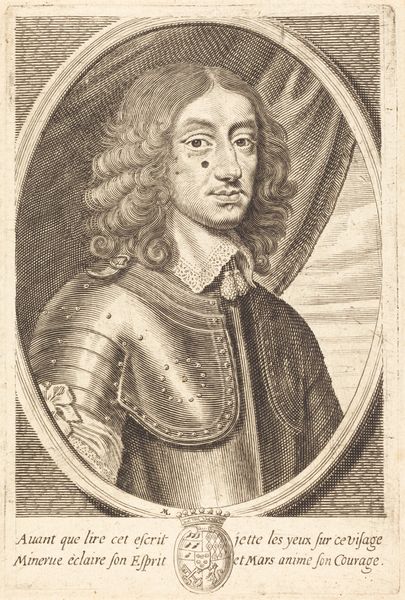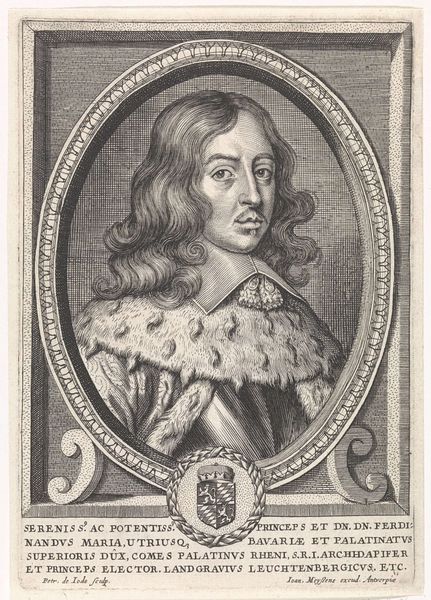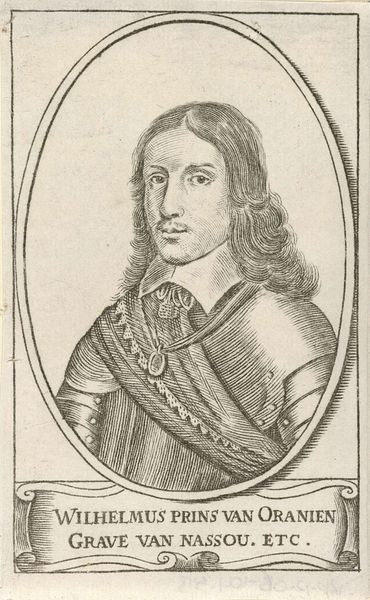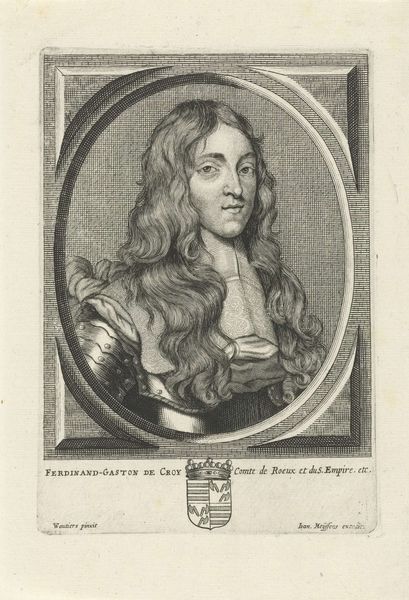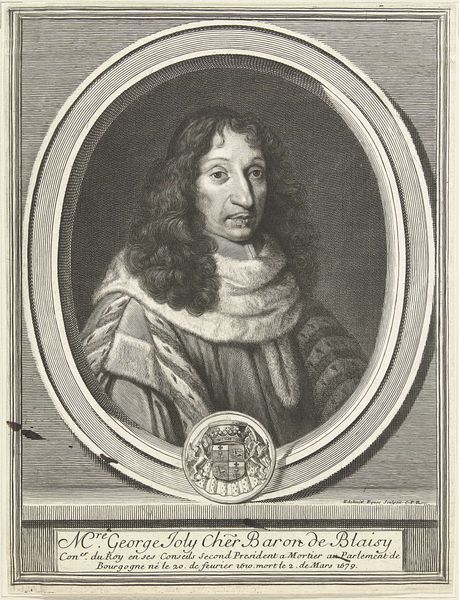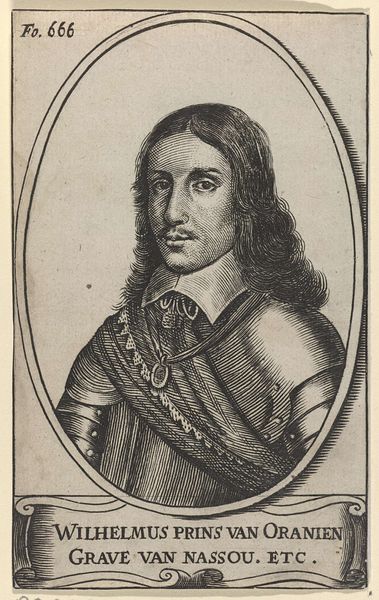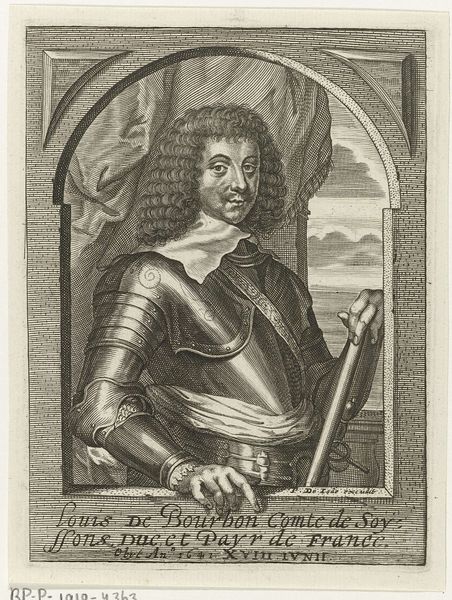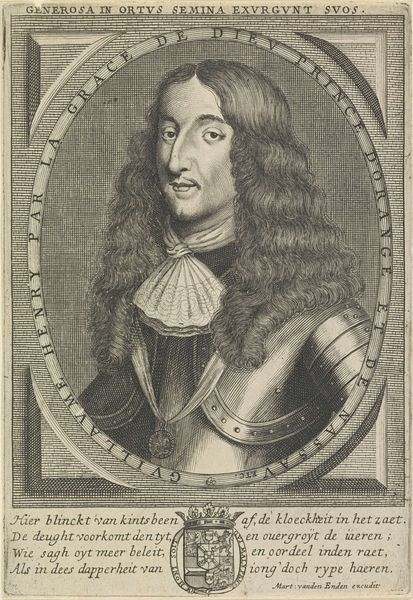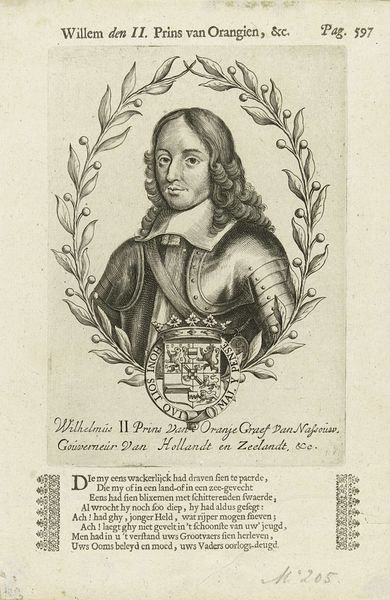
print, engraving
#
portrait
#
baroque
# print
#
old engraving style
#
portrait drawing
#
history-painting
#
engraving
Dimensions: height 171 mm, width 122 mm
Copyright: Rijks Museum: Open Domain
Curator: Looking at this print, what strikes you first? Editor: There's a certain formality to it, of course, but something in his eyes hints at vulnerability. It's more intimate than your typical princely portrait. Curator: Well, let's delve into some background. This is a print titled "Portret van Armand de Bourbon, prins van Conti" – a portrait of Armand de Bourbon, Prince of Conti, crafted sometime between 1628 and 1670. Pieter de Jode the Younger made the engraving, rendering the prince in meticulous detail. Considering the period, prints like this were often about disseminating images of power and status, wouldn’t you agree? Editor: Absolutely. And how does the choice of engraving, as a reproductive medium, affect our understanding of the image’s power and reach within 17th-century society? What were the printmaking labor practices and the economics that influenced the art that reproduced this portrait? Who had access to these prints, and how were they circulated and consumed? The print's material existence becomes an integral part of understanding its social life. Curator: Good points. The lines are so precise, rendered in what is best described as Baroque in style. It's incredible to consider the level of skill involved in the craftsmanship; look at the depiction of the armor and how de Jode conveyed the reflective surface. What about the sitter—did he have any connection to the art world at that time? What would his views about images and power in general have been? Editor: I see in the prince the larger social conflicts and religious strife during the tumultuous 17th century, so let's consider it in light of the political landscape. The choice to portray him in armor suggests a very deliberate connection between him and military and social power. Was it really about capturing individual likeness, or conveying ideas about inherited privilege in an era of great political upheaval? It also brings to the foreground conversations around gender, masculinity and representation. The Baroque aesthetic lends itself well to exploring those tensions. Curator: Those considerations make it a lens for seeing through, beyond simply recording appearances and to capture this image and fix him in popular culture and art of the period. Thank you for that nuanced way to consider both medium and maker here. Editor: The pleasure was all mine. Examining this print reveals how intertwined power and identity are in constructing historical narratives.
Comments
No comments
Be the first to comment and join the conversation on the ultimate creative platform.
